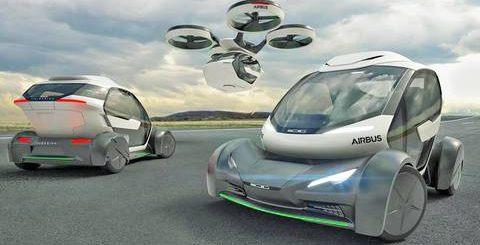Automatic pneumatic system in industry, Pneumatic robot arm use, advantages and disadvantages
Pneumatic robots are controlled with compressed air, Factories use pneumatic robots in automation applications to speed up the workflow, Some factories depend on an automatic pneumatic system to direct product ingredients through the proper stainless steel channels on the production line, The factory can improve its productivity after expanding its pneumatic system, It can keep facility operations running 24 hours a day.
Automatic pneumatic system
Pneumatics is the study of mechanical motion caused by pressurized gases and how this motion can be used to perform engineering tasks, It is used in mining and general construction works, Pneumatic devices are used in the dentistry industry across the world, and Pneumatic systems are designed to use pressurized gas to power machines and tools.
Pneumatic-powered equipment is used in industries where the factory units are plumbed for compressed air, The pneumatic devices have a less complicated design and can be made of inexpensive material, Mass production techniques can be adapted to produce pneumatic systems, which not only save money but save time too.
Pneumatics is economically priced, It can easily resist overheating, It can withstand wet and moisture-ridden environments, It is simple, These types of Pneumatic actuators are inherently explosion-proof, shockproof, and sparkproof, When specific speeds are needed, additional devices should be attached to the pneumatic system to get the desired result.
Pneumatics employs compression of gases, based on the working principles of fluid dynamics in the concept of pressure, Any equipment employing pneumatics uses an interconnecting set of components: The pneumatic circuit consisting of active components such as gas compressor, transition lines, air tanks, hoses, open atmosphere, and passive components.
The pneumatic robot arm is driven by pneumatic actuators as a versatile end effector, This arm consists of a pneumatic hand & pneumatic wrist, The hand’s shape is similar to the human hand & it can grasp objects that have different shapes & mechanical characteristics, The hand can grasp various objects without force sensors or feedback control, the wrist has redundant degrees of freedom, This is useful when the robot moves to avoid obstacles.
However, the drive mechanism of the wrist has nonlinearity from a mechanical viewpoint, the pneumatic actuators used as a drive source have hysteresis characteristics, These features make the wrist motions difficult to control, Because the wrist is used for handling materials, its motions need to be freely controlled.
Pneumatic robots advantages
Pneumatic robots can move quite smoothly, When requiring lifelike robots for films or theme park attractions, Gas-powered robots pose explosion and fire risks if they leak, the safety hazards associated with pneumatic robots are low because only air escapes into the environment if there’s a problem, Pneumatic robot comes with low-maintenance options than some other kinds of robots.
The YuMi robot is an industrial machine that can work alongside humans as a collaborative robot or cobot, It comes with pneumatic grippers capable of handling delicate items, Most similar grippers have hinges, increasing the possibility that they could wear out, the YuMi’s pneumatic gripping system offers the movement with an air pressure & vacuum system, reducing the need for substantial ongoing maintenance, The system’s grippers can interlock, making them similar to human hands.
Although the immense capabilities of hydraulics presented in terms of moving higher loads and in other industrial utilization, pneumatics are still in wide use today, Pneumatic actuators have a long life and perform well with negligible maintenance requirement throughout their life cycle, Very suitable for power transmission when the distance of transmission is more.
Pneumatic systems require air to operate successfully, As a result of air being extremely abundant, and free, it is easy to restock the system, As a result of pneumatic systems running on air, safety hazards can be reduced, There are limited occurrences of fires because air is non-flammable, and leakages in the system do not negatively affect the outside environment
The initial cost of manufacturing pneumatic device is minimal as a result of the low-cost design materials, Plastics, zinc, and aluminum are all relatively affordable materials that are commonly found in pneumatic designs, In order for the system to properly operate, it must be lubricated with oil consistently but they have less plumbing than hydraulic systems.
The pneumatic device requires limited cleaning, Pressurized air constantly pushes out dirt or debris that gets stuck in the system, It can be easily disassembled and cleaned, Air can move at speeds that can be adjusted from low to high or vice versa, When using a pneumatic cylinder actuator, the piston speed can reach 3 m / s, Air is used to clean surfaces such as metal and machinery, or indirectly, through pneumatic equipment to produce certain movements.
Air is the most important thing in the pneumatic system, It is available in the world around, It is a substance that is easily passed or move from one place to another through a small pipe, long and winding, Air can be used in quite extreme conditions, It is loaded safely, it is not flammable, A short circuit does not occur, The air around us is clean & without chemicals that are harmful, it can be minimized or cleaned with some processes, so it is very safe to use the pneumatic systems.
Disadvantages of pneumatic systems
Pneumatic systems can’t be employed for tasks that require working under high pressures, Air is a compressible gas, When the company needs a robotic application that allows for precise speed, The electric or hydraulic systems may be preferable to one controlled with air because pneumatic systems do not allow for much speed control compared to other options, So, additional investments may be required to supplement a pneumatic robotics system with other parts that provide for more speed control.
Pneumatic systems are less durable than hydraulic counterparts, Due to moisture accumulation system can freeze up, These systems are the loudest type of designs that power machines, The devices are known to fail over long periods due to the dampening of inside edges in the tubes, systems can’t operate underwater and are sensitive to changing temperatures and vibrations
Pneumatic systems require the installation of air-producing equipment, Compressed air should be well prepared to meet the requirements, Meet certain criteria, such as dry, clean, and contain the necessary lubricant for pneumatic equipment to reduce friction in the valves and actuators, So, require installation of pneumatic systems are relatively expensive equipment, such as compressors, air filter, lube tube, dryer, regulators, etc.
Pneumatic systems have lower upfront costs compared to hydraulic systems, and that fact makes them initially appealing to businesses trying to keep costs low, However, they could cost five to ten times more to operate than hydraulics, Although the robot with hydraulic parts will be more expensive than the pneumatic one, it’s more efficient, That’s because hydraulic systems work at higher pressures, making them compatible with small-scale actuators.
Pneumatic systems can have short lifespans due to a hidden problem, When moisture builds up inside pneumatic pipes, it can compromise the functionality of the robot and affect how long the equipment lasts, The humidity and pressure of the supplied air can influence the probability of trapped moisture, So, some facilities use dryers to dehumidify the air before it enters the pneumatic system, but that precautionary step is not always successful, especially with the use of small actuators.
Condensation increases as the diameter of the pipe increases and the pressure used in the application goes up, So, experts recommend using the smallest pipes and the lowest pressure possible, The pipe material with high thermal conductivity, such as copper, can reduce the moisture in the pneumatic system, On using pneumatic grippers, you will hit the part at full speed, If the part is not fixed in place before the pick, So, it may move to an unpredictable position.
Pneumatic systems sometimes use hazardous chemicals in their design, This can result in accidental launches of chemicals into the air, which can be harmful to the surrounding environment, They are subject to encountering pressure loss and air compressibility, which makes this actuator less efficient in comparison to others, These limitations translate into lower forces and slower speeds during operation at a lower pressure.
Pneumatics should be sized specifically for its application, It is not available as an easy “drop-in” system, but rather a highly-customized actuator for merely one application, To perform under accurate and efficient control, it requires proportional regulators and valves, which can raise the cost and complexity of a pneumatic actuator, the air can be contaminated by the oils and other lubricants, which can cause downtime and maintenance issues.
On using pneumatic grippers, If you need to handle parts of different sizes with the same gripper, you will waste some time doing the full manipulation for some of the parts, So, your gripper will require a lot of space around small parts, In confined spaces, the gripper might interfere with the surroundings, You can control the force of the grip by controlling the pressure, but it’s hardly programmable, if you handle delicate parts and parts that require a strong grip force with the same robot.
Pneumatic grippers can compromize air quality, the air contaminants that come from the pneumatic system are not acceptable, The electricity needed to run the compressor & the maintenance needs of pneumatic grippers can represent significant costs, Feedback from the gripper can be used to program the robot using grip events instead of timers for more efficient programs, this feature is not built in most pneumatic grippers, The speed and cost of pneumatic grippers are hard to beat.
Automation in manufacturing uses, advantages and disadvantages
Collaborative robot arm (cobot robots) applications, uses, advantages and disadvantages



